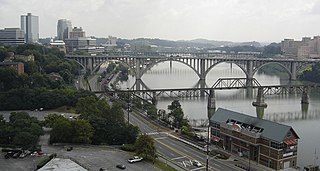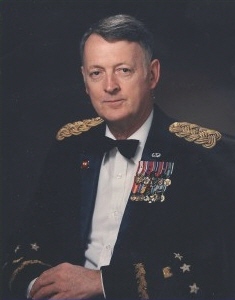
The United States Army Corps of Engineers Great Lakes and Ohio River Division (LRD) is one of the eight permanent divisions of the Army organization, providing civil works and military water resource services/infrastructure. It also supports economically viable and environmentally sustainable watershed management and water resources development in its territory.

The United States Army Corps of Engineers (USACE) is a U.S. federal agency under the Department of Defense and a major Army command made up of some 37,000 civilian and military personnel, making it one of the world's largest public engineering, design, and construction management agencies. Although generally associated with dams, canals and flood protection in the United States, USACE is involved in a wide range of public works throughout the world. The Corps of Engineers provides outdoor recreation opportunities to the public, and provides 24% of U.S. hydropower capacity.
Contents
The Division, headquartered in Cincinnati, Ohio, covers the American industrial heartland, stretching from the St Lawrence Seaway, across all of the Great Lakes, down the Ohio River Valley to the Tennessee and Cumberland Rivers. It covers 355,300 square miles (920,000 km2), parts of 17 states, and serves 56 million people.

The Great Lakes, also called the Laurentian Great Lakes and the Great Lakes of North America, are a series of interconnected freshwater lakes primarily in the upper mid-east region of North America, on the Canada–United States border, which connect to the Atlantic Ocean through the Saint Lawrence River. They consist of Lakes Superior, Michigan, Huron, Erie, and Ontario, although hydrologically, there are four lakes, Superior, Erie, Ontario, and Michigan-Huron. The connected lakes form the Great Lakes Waterway.

The Tennessee River is the largest tributary of the Ohio River. It is approximately 652 miles (1,049 km) long and is located in the southeastern United States in the Tennessee Valley. The river was once popularly known as the Cherokee River, among other names, as many of the Cherokee had their territory along its banks, especially in eastern Tennessee and northern Alabama. Its current name is derived from the Cherokee village Tanasi.

The Cumberland River is a major waterway of the Southern United States. The 688-mile-long (1,107 km) river drains almost 18,000 square miles (47,000 km2) of southern Kentucky and north-central Tennessee. The river flows generally west from a source in the Appalachian Mountains to its confluence with the Ohio River near Paducah, Kentucky, and the mouth of the Tennessee River. Major tributaries include the Obey, Caney Fork, Stones, and Red rivers.
The Division Commander is directly responsible to the Chief of Engineers. The LRD Commander directs and supervises the individual District Commanders, and also serves on two national and international decision-making bodies: co-chair of the Lake Superior, Niagara, and Ontario/St Lawrence Seaway boards of control; and the Mississippi River Commission. In September 2011 Margaret W. Burcham became the first woman to command a USACE division when she was appointed commander of the Great Lakes and Ohio River Division. [1]

Margaret W. Burcham is a retired American brigadier general. She was the first female brigadier general in the U.S. Army Corps of Engineers.
LRD duties include:
- Preparing engineering studies and design.
- Constructing, operating, and maintaining flood control and river and harbor facilities and installations.
- Administering the laws on civil works activities.
- Acquiring, managing, and disposing of real estate.
- Mobilization support of military, natural disaster, and national emergency operations.












